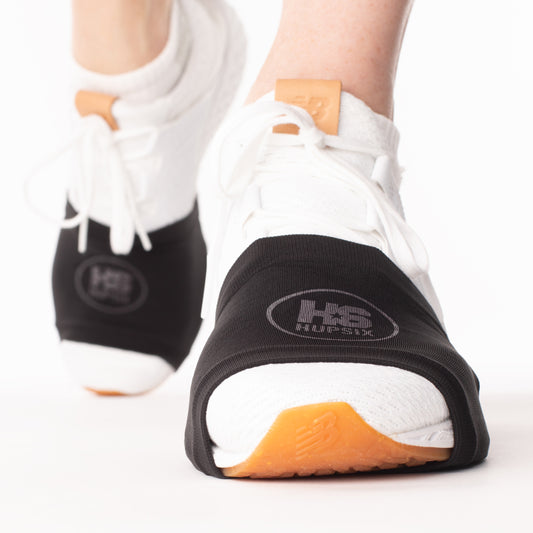
How Accurate Are Fitness Trackers? Why We Prefer Chest Straps
Quick Answer: Wrist-based trackers are helpful for awareness, but their heart-rate accuracy drops as intensity and arm movement increase. Chest-strap monitors read the heart’s electrical signals directly and stay accurate during vigorous exercise—so your zone minutes reflect the effort you actually did.
How Accurate Are Fitness Trackers?
Most fitness trackers are fairly accurate for steady heart rate but lose precision during high-motion workouts. Wrist sensors use light to estimate blood flow, while chest straps read electrical signals (ECG-style) for near-lab accuracy—making them the better choice for real training data.
Why Fitness Tracker Accuracy Actually Matters
1. Steps Don’t Measure Fitness
Steps measure movement volume, not cardiovascular load. You can walk 10,000 steps at a casual pace and never stress your heart enough to trigger adaptation. That’s not training—it’s just activity.
Even worse, step counts from wrist trackers vary wildly. The same movement can read differently across brands, and studies show as much as 20–40% variation depending on stride, gait, and arm swing. They’re not just meaningless for fitness—they’re unreliable as data.
2. Calories Burned Is an Empty Metric
Calorie-burn numbers from watches are estimates built on motion and heart-rate formulas, not measured output. They can be off by ±25–40%, especially for women, smaller individuals, or during interval or resistance work.
The deeper problem: knowing how many calories you burn doesn’t improve your fitness, performance, or heart strength. It’s a nutrition metric—useful if you’re tracking calories in, not for measuring cardiovascular progress.
3. The Only Metric That Matters for Cardio Training Is Time in Zone
The heart adapts to sustained effort at sufficient intensity. That’s why every credible source—from Dr. Kenneth Cooper to Dr. Ben Levine to the Norwegian 4×4 studies—builds cardio prescriptions around moderate and vigorous minutes. That’s the number that tells you your heart is actually remodeling—not your step count or calorie total.
4. “Steps and Calories Are Easy to Display” Was the Wrong Idea
They’re easy to sell, not easy to measure. They make devices look smart, but they don’t represent what’s happening inside your body.
Wrist Trackers vs Chest Straps
- Wrist (optical): Uses light to estimate blood flow. Convenient, but accuracy drifts with motion, sweat, tight gripping, and faster efforts. That drift can move you from a vigorous zone reading to a moderate one on the watch, even when your heart is working harder.
- Chest strap (ECG-style): Detects the heart’s electrical activity directly, beat by beat. Remains accurate during intervals and high movement, keeping your zone-minute totals trustworthy.
What the Research Shows
Multiple studies confirm that chest-strap monitors have near-ECG accuracy when worn properly, while wrist optical sensors show more variation during intense or high-motion exercise. That doesn’t mean wrist devices are useless—they’re fine for steady activity or daily trends—but they’re not as reliable for workouts that involve fast transitions or full-body movement.
- JAMA Cardiology: Chest-strap monitors align closely with ECG, while wrist optical sensors show variable accuracy under high motion.
- Journal of Sports Sciences: Wrist optical monitors can drift by 10–20 bpm during intervals or heavy arm movement.
- Applied Ergonomics: Chest straps provide the most accurate real-time data when tracking vigorous activity.
What This Means for Zone Minutes
Moderate minutes maintain fitness; vigorous minutes improve it and count double toward weekly goals. If a wrist device misses peaks or lags during intervals, you may undercount vigorous time. A chest strap protects the number that matters most: how long your heart actually trained.
How This Connects to HupSix
What HupSix is: HupSix is a fast-paced workout that improves the way you move using patented gear, bodyweight exercises, and audio cues to get you moving in sync to music that rocks.
HupSix workouts are designed to keep you in moderate-to-vigorous zones through guided rounds synced to rock music and light resistance. That structure reduces coasting and helps you accumulate meaningful zone minutes efficiently.
Why we recommend chest straps: Our sessions involve fast, full-body movement. A chest strap preserves accuracy so your zone minutes—and your progress—stay honest.
Typical result: Many users log ≈ 40–50 minutes of cardio credit from a single 30-minute class when measured with a chest strap. Your exact numbers will vary, but the principle holds: quality time in zone adds up fast.
How to Get Better Data
- Use a chest-strap HRM: Connect it directly to a phone app via Bluetooth; no watch required. Accuracy comes from reading electrical signals, not motion.
- Treat wrist data as a trend: It’s fine for everyday movement. For precise training zones, trust the strap.
- Fit tip: Wear it snugly below the chest line, moisten electrodes if needed, and ensure solid contact to reduce dropouts.
FAQ
Are wrist trackers accurate for hard cardio?
Reasonably accurate at rest and steady efforts; less reliable during fast, high-motion training. For precise zone work, use a chest strap.
Why are calorie numbers often off?
They’re estimates based on movement and heart-rate patterns, not a direct measurement. Use them for rough trends, not decisions.
What should I focus on to improve fitness?
Time in your moderate and vigorous zones each week, measured as accurately as possible.
Quick FAQ Add-On
Do I need a watch for accurate zones?
No. A chest-strap heart-rate monitor connected directly to a phone app can measure zone minutes with near-ECG accuracy. The precision comes from how it reads the heart’s electrical signals—not from being paired to a watch.
Why do watches read on the top of the wrist when the pulse is on the underside?
Wrist trackers use optical (PPG) sensors that shine light into the skin and detect blood-flow changes. They’re placed on the top because it’s flatter and moves less when you flex, helping maintain stable contact. The underside bends more and interferes with readings. A chest strap avoids this by measuring ECG signals directly.
Why This Matters for Real-World Training
Accurate data keeps training honest—and fun. When you can see real progress in your heart-rate zones, workouts feel purposeful instead of random. That feedback loop is what builds consistency. HupSix makes that process fast, musical, and engaging so you actually look forward to cardio again.
Want to Learn More About HupSix?
- Best Cardio Equipment Under $300 (Is HupSix Right for You?)
- Do This Instead of Running
- Best At-Home Workout for Retired Athletes
Risk-Free to Try
HupSix comes with a 30-day full refund—no questions asked. If life gets busy or it’s not your thing, you have 12 months to send it back for a prorated return. Every kit is protected by a lifetime gear warranty. Need help? We offer 1-on-1 support for personalized feedback anytime.
About the Author
Stephanie Harris is a certified personal trainer with over 20 years of experience training Fortune 500 executives to professional athletes. She’s the creator of HupSix, a patented, music-driven cardio system, and the founder of The DanceSocks, the original over-sneaker sock trusted by studios and instructors worldwide.


